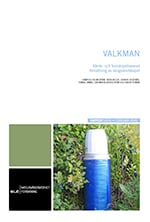VALKMAN – a value and knowledge-based model for managing future landscapes

About this report
The VALKMAN project has developed a value and knowledge-based model for managing future landscapes. The model includes methods for:
- Estimating the availability of so-called ecosystem values.
- Developing contrasting scenarios for forest landscape development.
- Involving stakeholders in the planning process for the future forest management.
The result can be used by, e.g., county boards and the Forest Agency in advisory processes related to green infrastructure that affect many different interests and many different stakeholders, and in collaboration processes between forestry and other land use-based industries (e.g., reindeer husbandry) and other users of the forest.
With the help of maps, tables and diagrams, participants in the collaboration process can evaluate the forest management scenarios based on the information presented. Stakeholders then receive information on what the forest management strategies in the scenarios mean for several different objectives (i.e., ecosystem values). Thus, stakeholders make informed decisions when evaluating the scenarios. The method clarifies which concessions need to be made in order for a desired forest management strategy to be implemented. This so-called Multi-Criteria Decision Analysis (MCDA) that was applied is a useful method for supporting a collaborative process to take both quantitative data and subjective values into account. The results produced by MCDA are valuable as support for planning and as a basis for discussions with stakeholders, but should not be regarded as “the only correct way” or something to be implemented to the point – adaptability and responsiveness to the planning situation in question is crucial.
